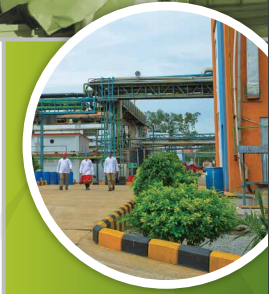 Chemical synthesis of very long peptides and certain sequences considered difficult is always a challenge. In this post, we’ll share a few practical tips for improving various critical aspects of solid phase peptide manufacturing during production.
Chemical synthesis of very long peptides and certain sequences considered difficult is always a challenge. In this post, we’ll share a few practical tips for improving various critical aspects of solid phase peptide manufacturing during production.
During solid-phase peptide synthesis, a peptide anchored by its C-terminus to an insoluble polymer is assembled when the protected amino acids making up its primary structure are added. Aggregation of the resin-bound peptide can be problematic, and can even cause Fmoc-SPPS to fail. However, the presence of proline effectively blocks the formation of aggregates. Temporary proline mimics can be retrieved from serine (Ser) and threonine (Thr) via formation of oxazolidine, or “pseudoproline.” Smooth cleavage by trifluoroacetic acid renders the 2.2 dimethyloxazolidine ready for Fmoc-SPSS.
Racemization occurs when one enantiomer of a compound, such as an L-amino acid, converts to the other enantiomer. The compound then alternates between each form while the ratio between the positive and negative groups gradually becomes 1:1, where it becomes optically inactive. Using pseudoprolines at the C-termini of segments allows the coupling reactions to proceed free of racemization.
Pseudoproline dipeptides significantly improve the success of synthesizing long and difficult peptides. When used with peptides containing serine and threonine, pseudoproline dipeptides dramatically improve the quality and yield of crude products, and also help avoid repeat synthesis of failed sequences.
Like pseudoprolines, Dmb-amino acid derivatives also keep aggregates from forming. Dmb dipeptides are unique derivatives that improve synthesis of hydrophobic, aggregated sequences containing glycine. They work the same way as pseudoproline dipeptides, using the natural tendency of N-alkyl amino acids to disrupt the formation of the secondary structures during peptide assembly. Using Dmb dipeptides enables better and more predictable acylation and deprotection kinetics, enhances reaction rates, and improves yields, purity and solubility of crude products.
 Isoacyl peptides are also notable tools for improving the efficiency of Fmoc-SPPS. Replacing Aaa-Ser or Aaa-Thr with an isoacyl dipeptide in a peptide sequence results in a marked change in the formation of the peptide chain, disrupting aggregation in a similar fashion as inserting a pseudoproline or N-Dmb/Hmb-residue. However, isoacyl dipeptides have proven to have an even greater advantage when the peptide is released from the solid phase. Unlike with pseudoproline dipeptides, the product cleaved when using isoacyl dipeptides is the depsipeptide, and not the native peptide sequence. These depsipeptide analogs of peptides prone to aggregate have been found to be more soluble and thus more easily purified than the highly structured native peptide.
Isoacyl peptides are also notable tools for improving the efficiency of Fmoc-SPPS. Replacing Aaa-Ser or Aaa-Thr with an isoacyl dipeptide in a peptide sequence results in a marked change in the formation of the peptide chain, disrupting aggregation in a similar fashion as inserting a pseudoproline or N-Dmb/Hmb-residue. However, isoacyl dipeptides have proven to have an even greater advantage when the peptide is released from the solid phase. Unlike with pseudoproline dipeptides, the product cleaved when using isoacyl dipeptides is the depsipeptide, and not the native peptide sequence. These depsipeptide analogs of peptides prone to aggregate have been found to be more soluble and thus more easily purified than the highly structured native peptide.
All the strategies mentioned above target the fact that SPPS is limited by yields. By significantly improving yield, they effectively reduce the cost of APIs. And by improving the purity and solubility of the crude products, the entire SPPS process is made more efficient, saving valuable time and money.
Have you tried any of these strategies to improve solid phase peptide synthesis, or something else? If so, please share your experience in the comments.










